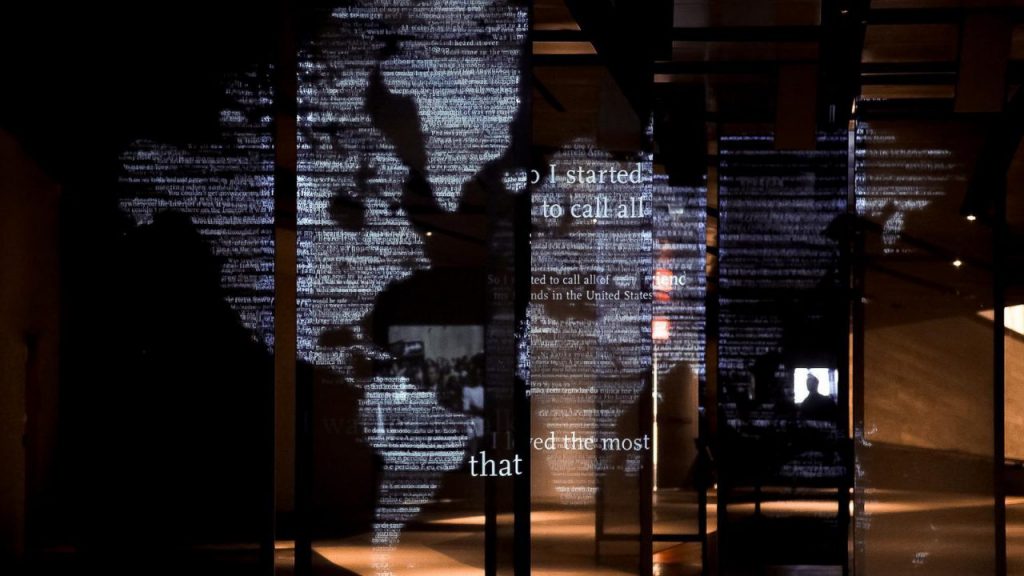The project I want to discuss is the 9/11 museum designed by Local Projects, an experience design studio. The 9/11 museum is designed to be a museum of collective memories with a plurality of views. Visitors can record their reflection on 9/11 and the curators will integrate visitor responses into the exhibit. By the end of the exhibit, visitors may write a note of hope and remembrance, and these notes will be projected temporarily onto a space near the beam, then stored in the museum’s permanent digital archive.

I like this project because it changes the role of the visitors from passive receivers to active contributors in how the tragedy will be remembered. Conventionally, museums provide a singular and authoritative narrative, and all the work of collecting evidence and making analysis will be finished beforehand. However, because 9/11 is still influencing some of us in the present, incorporating ongoing stories from the public successfully addresses the unsettled nature of the subject. The rawness and variety of expressions send a clear message: the past is still present.

I am not sure exactly how many people are involved in the developing phase of the project, but I learned that the team is multidisciplinary and they usually put a different interdisciplinary team on each phase of a new project because the main focus shifts as they move on. Speaking about the technical aspect, I am not sure what softwares are used but the project involves a powerful database that frequently updates the most recent articles related to 9/11 and store newly introduced notes and video record. As for the inspiration, Jake Barton, the founder of Local Projects says that he was influenced by Anna Deavere Smith’s Twilight: Los Angeles, 1992. He commented, “It was really an exercise in empathy, in trying to find the humanity of everyone involved.” I believe that this project points to a future where the museum is no longer a static, official, and definite place but a continuously evolving cluster of stories and memories from everyone and everywhere. I imagine the dynamic between the visitors, the installation, and the designers will change interestingly.
![[OLD FALL 2020] 15-104 • Introduction to Computing for Creative Practice](wp-content/uploads/2021/09/stop-banner.png)